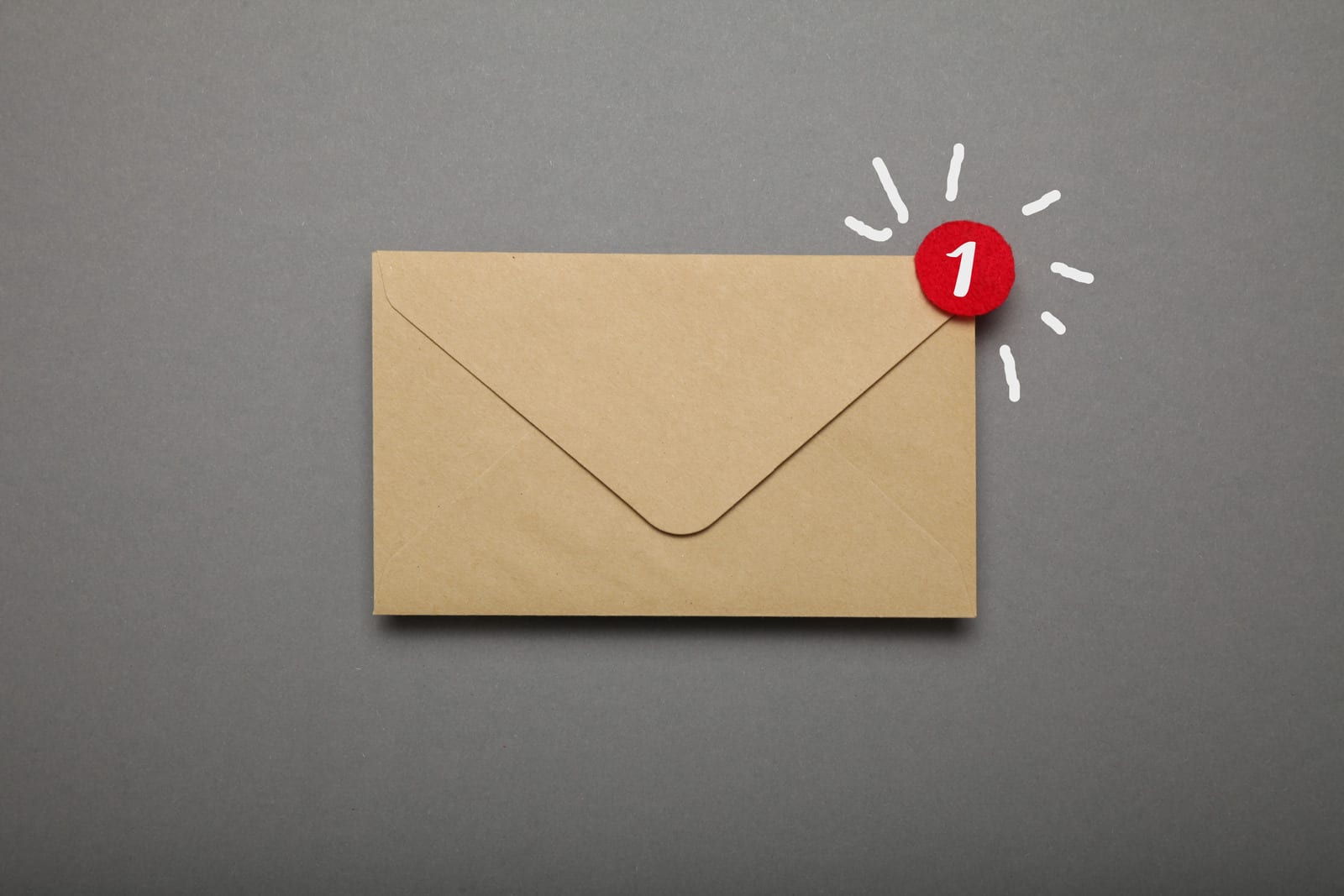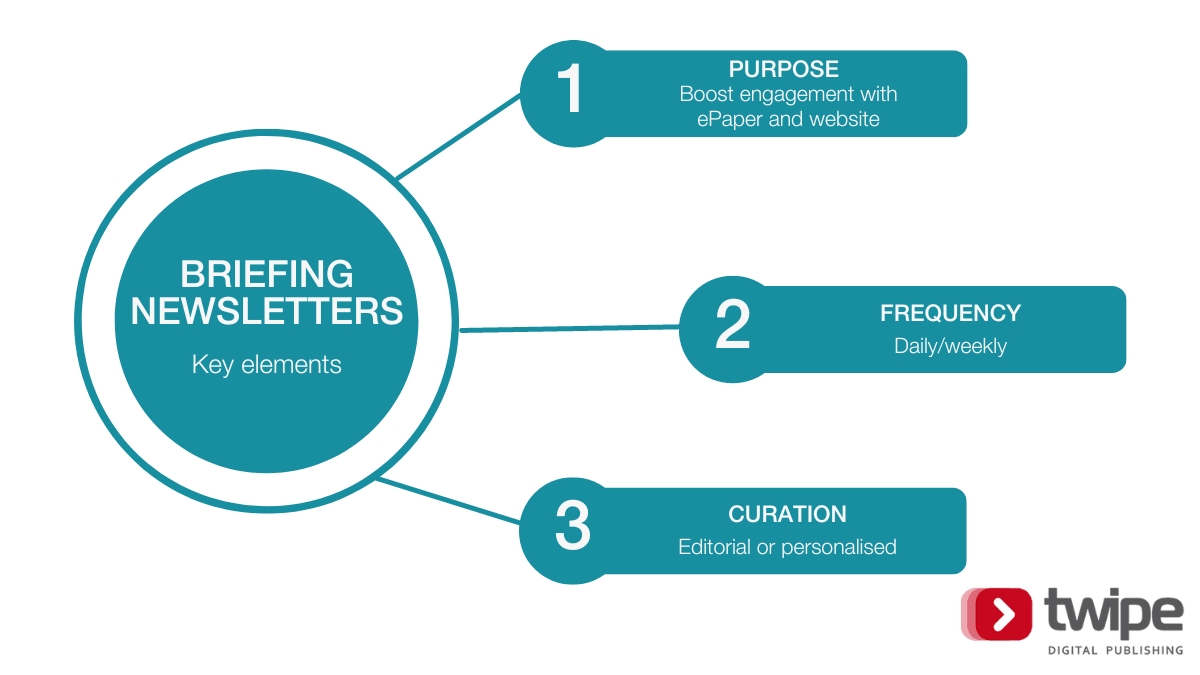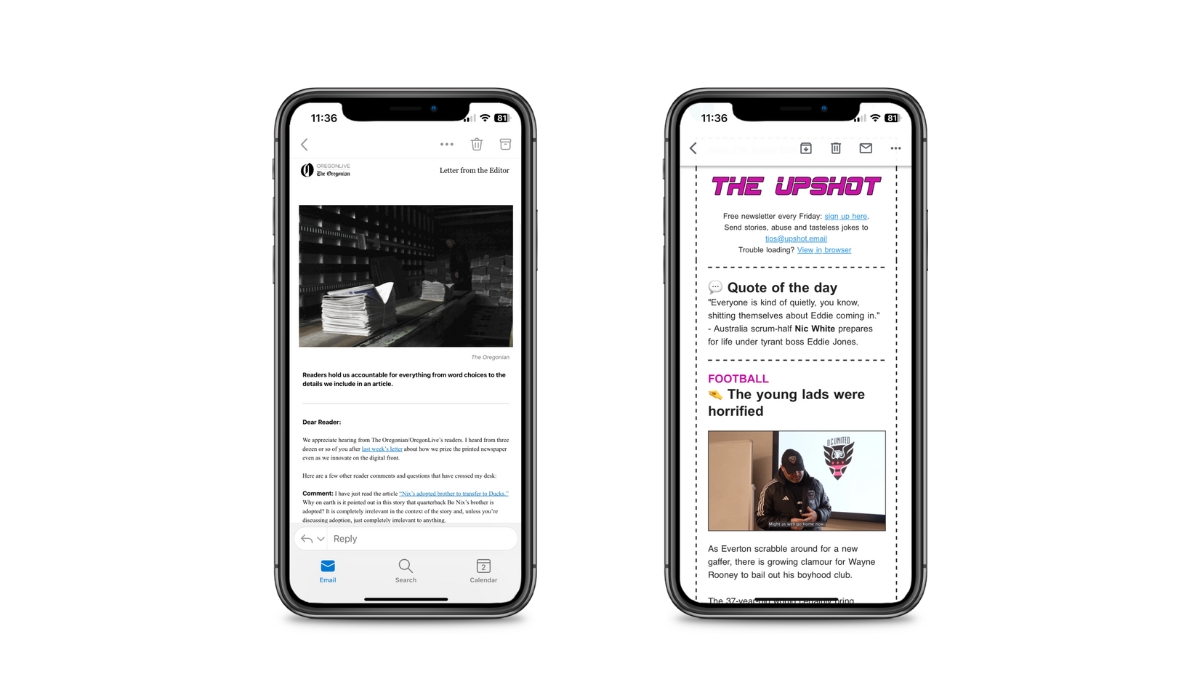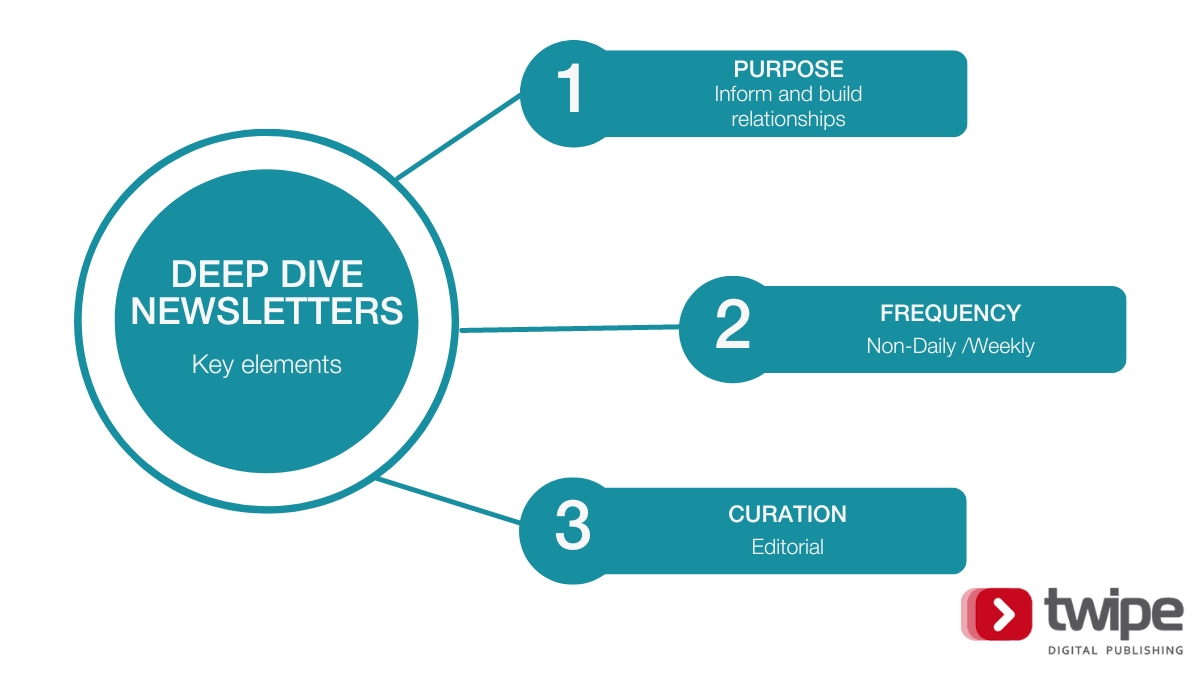3 types of newsletters every publisher should experiment with | What’s New in Publishing

69% of publishers identify newsletters as an area where they will be putting more resources in 2023. According to WAN-IFRA, 50% of publishers already offer between 1-5 newsletters, with the other 50% offering significant amounts more.
Many reasons have been attributed to the success of newsletters in recent years such as harvesting user data and adding value to subscriber bundles. We dive into 3 different newsletter formats you need to know about for your 2023 newsletter strategy.
Type 1: Briefings boosting engagement
Briefing newsletters push subscriber engagement. These tend to be dailies and are a window to the day’s news, exposing readers to the main stories of the day. Briefings tend to come in 2 forms: ePaper announcements and Daily Briefings.
ePaper announcements are triggers to get subscribers to engage with the day’s ePaper. They act as a partner in life for subscribers and guide them through the must-read stories. The Daily Mail’s ePaper newsletter arrives each morning at 7am and is an important trigger for their Mail+ app. Many other publishers use this ePaper push strategy like Atlanta Journal-Constitution and The Wall Street Journal.
Daily briefings push subscribers to engage with other stories on news websites. They drive clicks and encourage article sharing, exposing readers to stories which may have missed the days edition or broken throughout the day. Danish publisher Børsen have an 11am update to inform their subscribers about the latest financial news ahead of lunch. They also publish Børsen Pro International, a newsletter published in English designed to boost their brand beyond Denmark featuring the latest international news.
Curation of briefings can be done in 2 ways: editorially or through personalisation. Editorial curation provides a generic story selection for all newsletter subscribers. Whilst this gives full control to the newsroom, it can limit the exposure of the full range of stories to readers. News recommender personalisation tools, like JAMES, curate content on a 1 to 1 basis, giving each reader a tailored set of stories. JAMES uses a hybrid algorithm so that subscribers are exposed to a mixture of trending stories to get their need-to-know news, but also stories tailored to their previous reading behaviour. Readers are therefore exposed to 80-90% of the day’s content, showcasing more of the newsroom’s work.
Automation is a tool which can be leveraged by both personalised and editorially curated briefing newsletters. Automation saves newsrooms time focusing on the development of their digest newsletters and allowing them to focus upon their content. In Finland, JAMES automation is central for Mediatalo Keskisuomalainen’s newsletter strategy. As a regional publisher, some of their newsrooms feature as few as 2 members of staff meaning that automation is crucial for their newsletter strategy.

Type 2: Deep dives building relationships
Deep dive newsletters provide detailed content and opinion. They traditionally came in formats like “Letter from the Editor”, however with the late 2010’s growth of platforms like Substack many journalists decided to develop their own long-read newsletters. These newsletters have a personal tone and focus on niche topics or news areas. This helps them build reader relationships and inform readers.
Deep dive newsletters tend to be less frequent than digests as they are editorially written and curated (for now) which is more time consuming. It also means that they require more effort to read from subscribers. Inside these newsletters, expect hot takes and opinion aplenty. These newsletters tend to feature an element of free to subscribe with subscriber-only benefits like extra editions or exclusive content and access.

The Oregonian’s “Letter from Editor” newsletter adds a human face to their reporting through its personal tone. The newsletter often addresses comments from readers and dives into answers so that readers feel heard. “Letter from Editor” also features contact details to promote transparency and openness with their readers.
In the UK, sports gossip newsletter and personal favourite The Upshot is published 3 times a week. Their Friday newsletter is free and dives into sports stories the mainstream media dare not touch. With an Upshot Gold subscription, subscribers get exclusive access to a Sunday edition “Old Gold” reflecting on a retro sports story, and a Wednesday edition diving into exclusive gold stories.

Type 3: Summarisers giving quick hits of the top stories
Summarisers, much like briefings, give a snapshot of the day or week’s top stories. What differentiates the two however is the depth offered. Summarisers provide a briefing on the day’s top stories so that newsletter subscribers don’t have to click through to the full story. They aim to save the subscriber time. With the summary needing to be provided, these newsletters tend to be editorially curated. Summarisers are often daily or weekly newsletters, and some publishers leverage them as a chance to update readers of new stories which may have broken or developed throughout the day.
The Athletic have a “Daily Football Briefing” newsletter giving subscribers summaries of the top stories of the day. Each summary then features a link below to the full article to read more on the app.

Perhaps the most powerful example of a summariser newsletter comes from smart-brevity focused Axios. Their Media Trends newsletter from Sara Fischer gives the lowdown from the biggest media stories in the day. Each story is broken down into small smart chunks to provide subscribers with the need-to-know details from each story. Readers are then free to go and conduct their own research to get more in-depth information on each story.

Social media appearing as a new platform for newsletters
Despite Twitter shutting down Revue and Facebook ending Bulletin, social media platforms are still relying on the potential of newsletters and provide an alternative to email. LinkedIn newsletters have proved a hub for innovation and experimentation. Any type of newsletter can be set up on LinkedIn and they are sent directly to the notifications and email inbox of newsletter subscribers. It is also easy to invite connections to subscribe, much like inviting them to follow a LinkedIn page. Publishers like Forbes, The Financial Times and L’Opinion have already leveraged LinkedIn newsletters. We recently launched our Twipe Weekly News Digest as a LinkedIn newsletter to give our subscribers access to our top 5 stories of the week, with you every Monday morning.
WhatsApp newsletters have also come to the fore. Publishers have previously experimented with WhatsApp but newsletters are a new way to do this. WhatsApp newsletters utilise the broadcast feature and are a more informal way of starting a newsletter. Signing up requires just 2 clicks and no email address. Their frequency is up to the creator, being able to post as frequently or rarely as they want. The fact that these are on an app means that they are already mobile optimised and can easily feature non-text elements like videos and files. The newsletters are easily shareable via links and can be linked directly to a WhatsApp group. Communities can also be built with the most engaged members of newsletters able to be added into private group chats.
Cathy Hackl has a successful Metaverse & Web3 newsletter running whilst Matt Navarra’s Geekout newsletter now also has a home on WhatsApp with over 3600 participants.
Matthew Lynes
Media Innovation Analyst @ Twipe
Get Twipe’s weekly insights on digital publishing, artificial intelligence, and paid content in your mailbox. Sign up here.













You must be logged in to post a comment Login